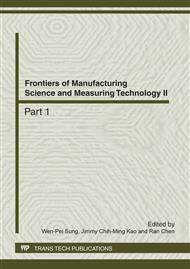p.1190
p.1194
p.1198
p.1203
p.1208
p.1212
p.1216
p.1220
p.1225
Electrostatic Attachment of Ferrocene Monolayer to a Gold Electrode for Use as Ascorbic Acid Sensor
Abstract:
A new ascorbic acid electrochemical sensor was made by electrostatic assembly of ferrocene polymer monolayer on the surface of gold electrode which modified with negatively charged alkanethiol. Cyclic voltammetry and current-time curve were employed to investigate the electrochemical characteristics of the sensor. The ferrocene monolayer modified electrode exhibit excellent electrocatalytic response to the oxidation of ascorbic acid. The anodic overpotential was reduced by about 180 mV compared with that obtained at a bare gold electrode in cyclic voltammetry. Under the optimal conditions, the linear range of the sensor response to ascorbic acid was from 0.05 to 1 mM and the detection limit was 2.710-5 M. The sensor possesses simple preparation, fast response and good electrochemical stability.
Info:
Periodical:
Pages:
1208-1211
Citation:
Online since:
April 2012
Authors:
Price:
Сopyright:
© 2012 Trans Tech Publications Ltd. All Rights Reserved
Share:
Citation:


